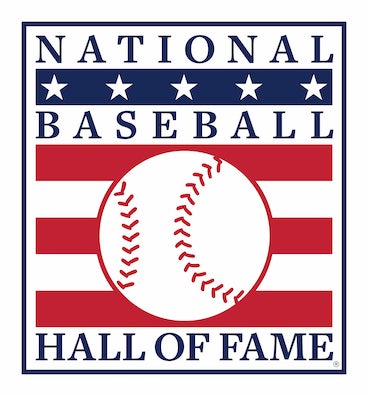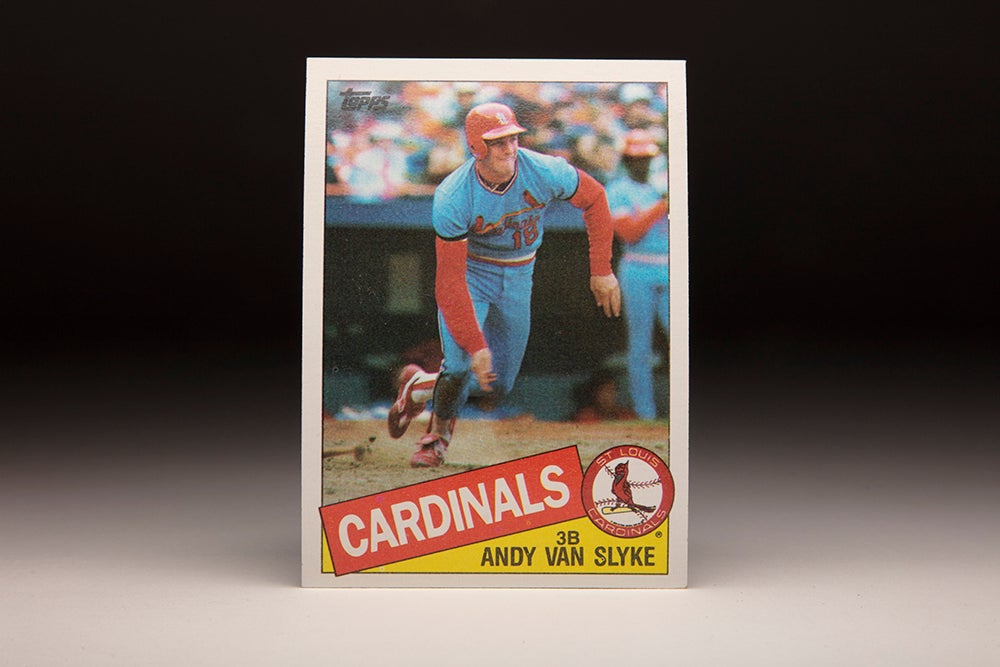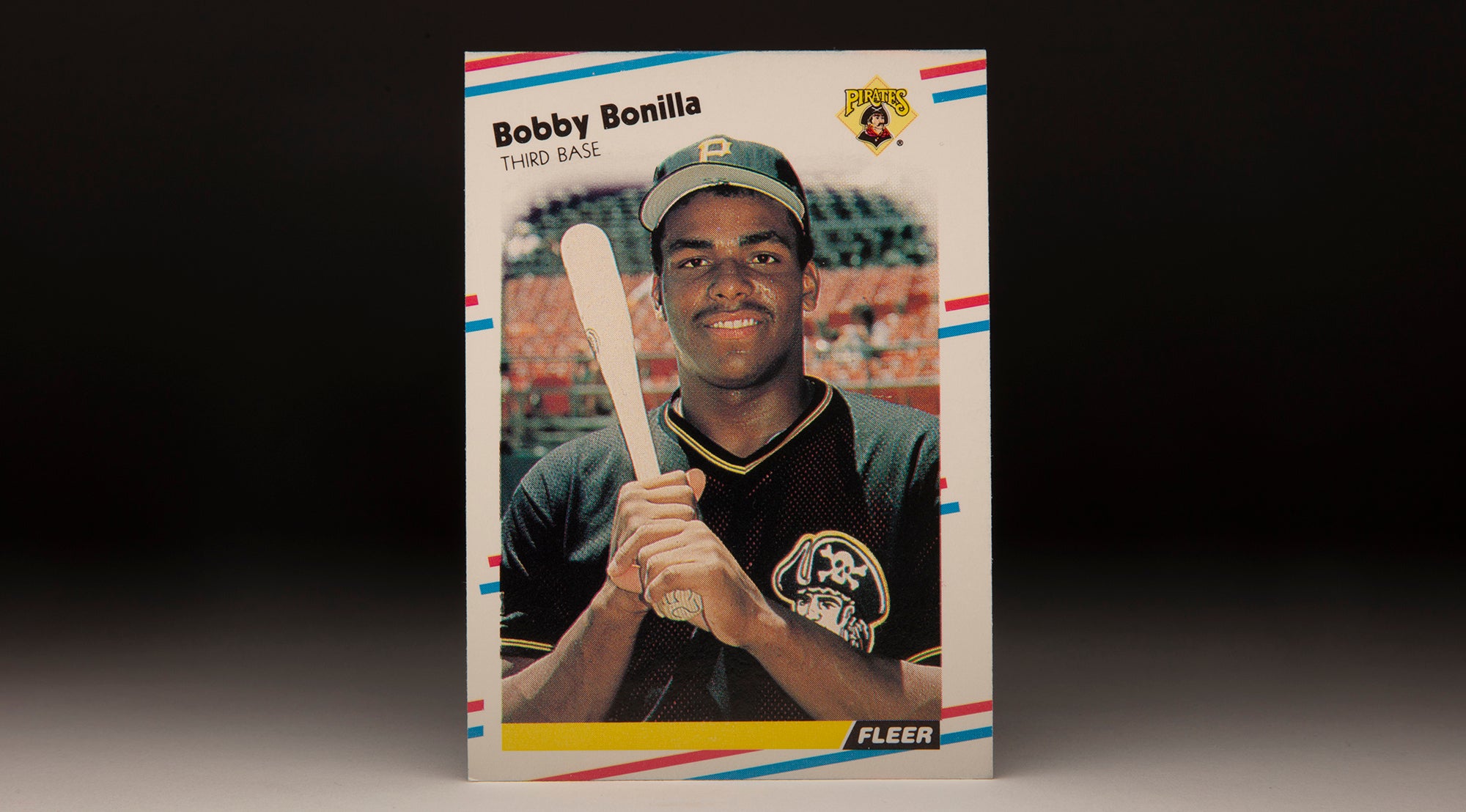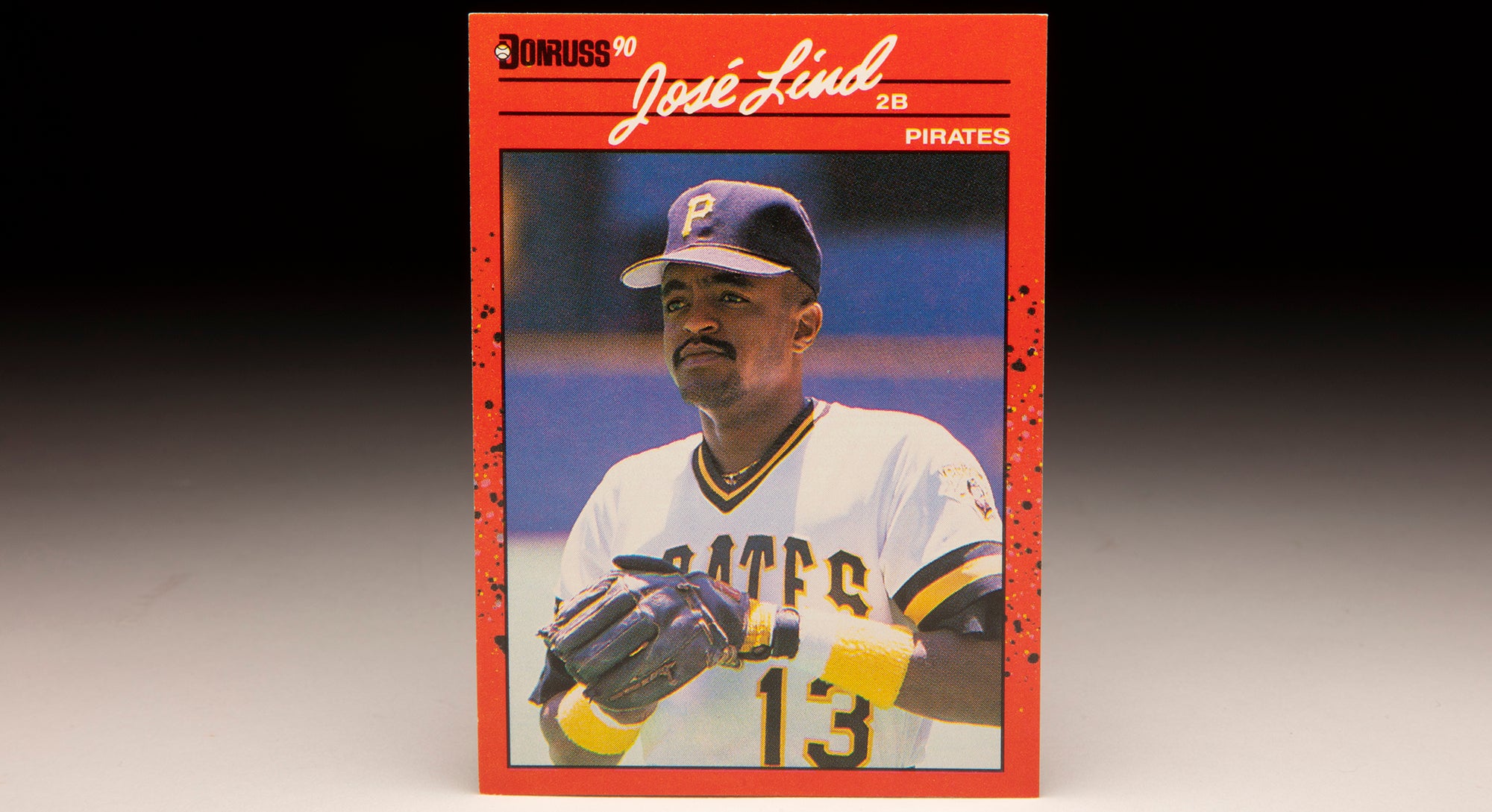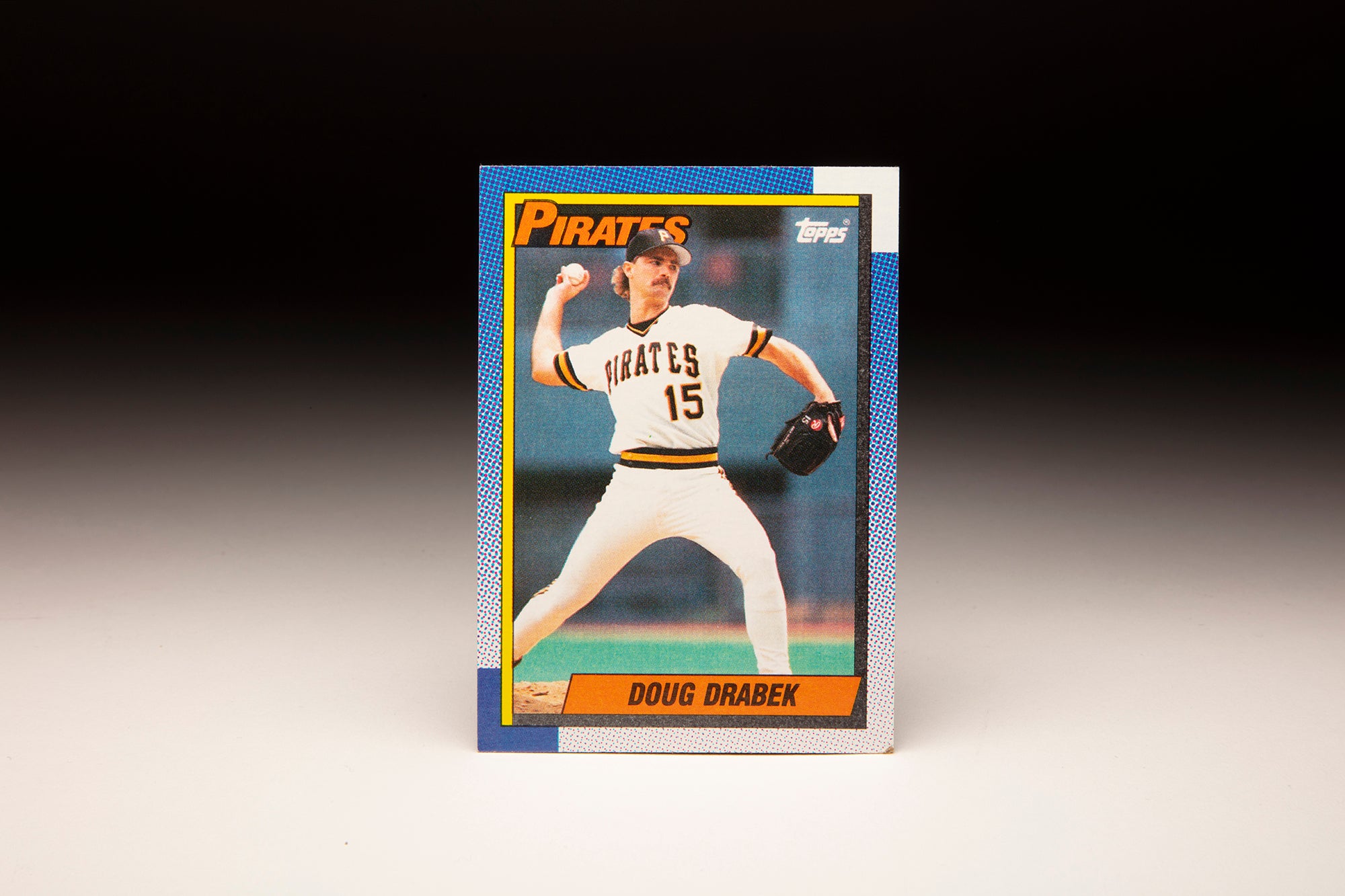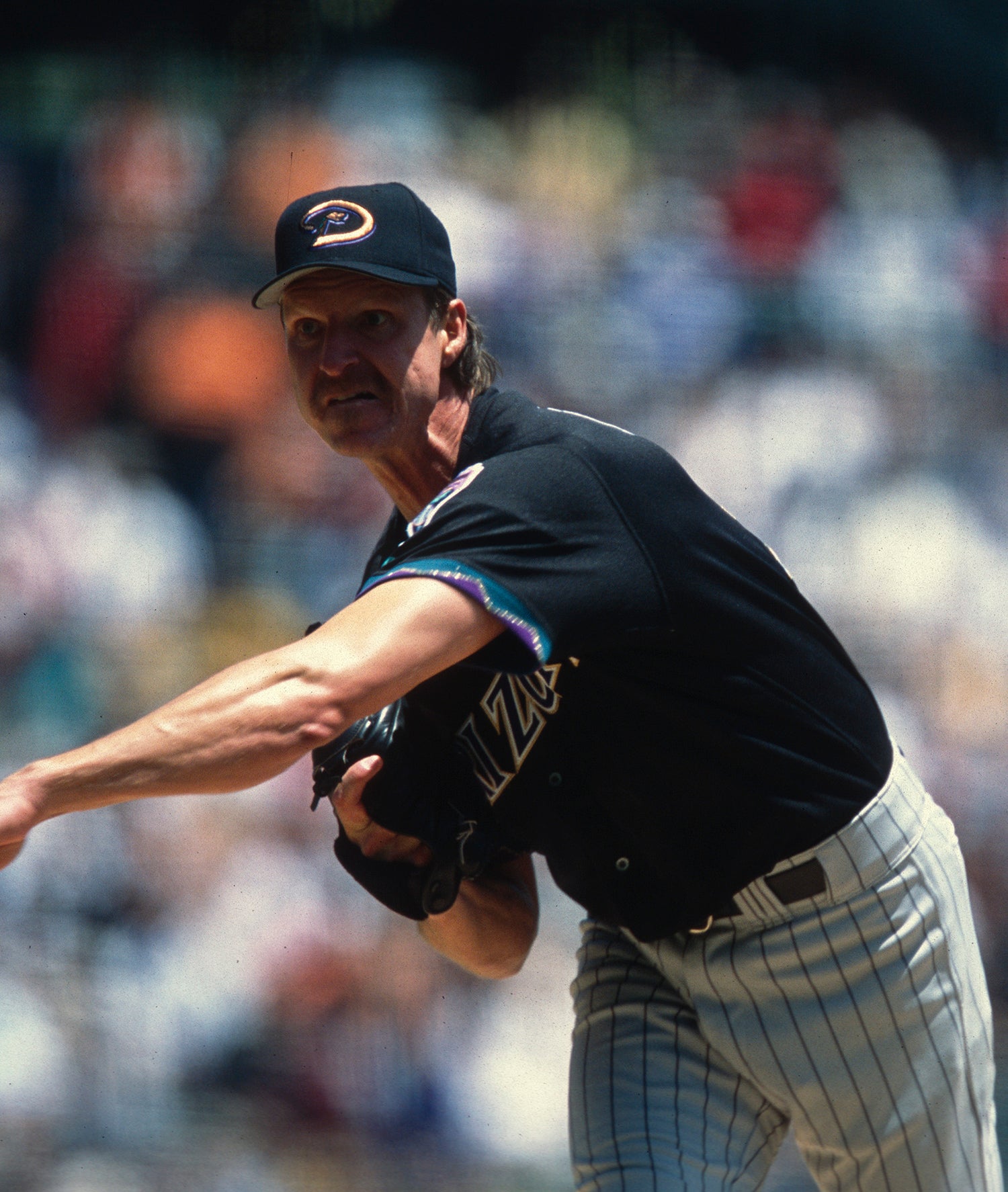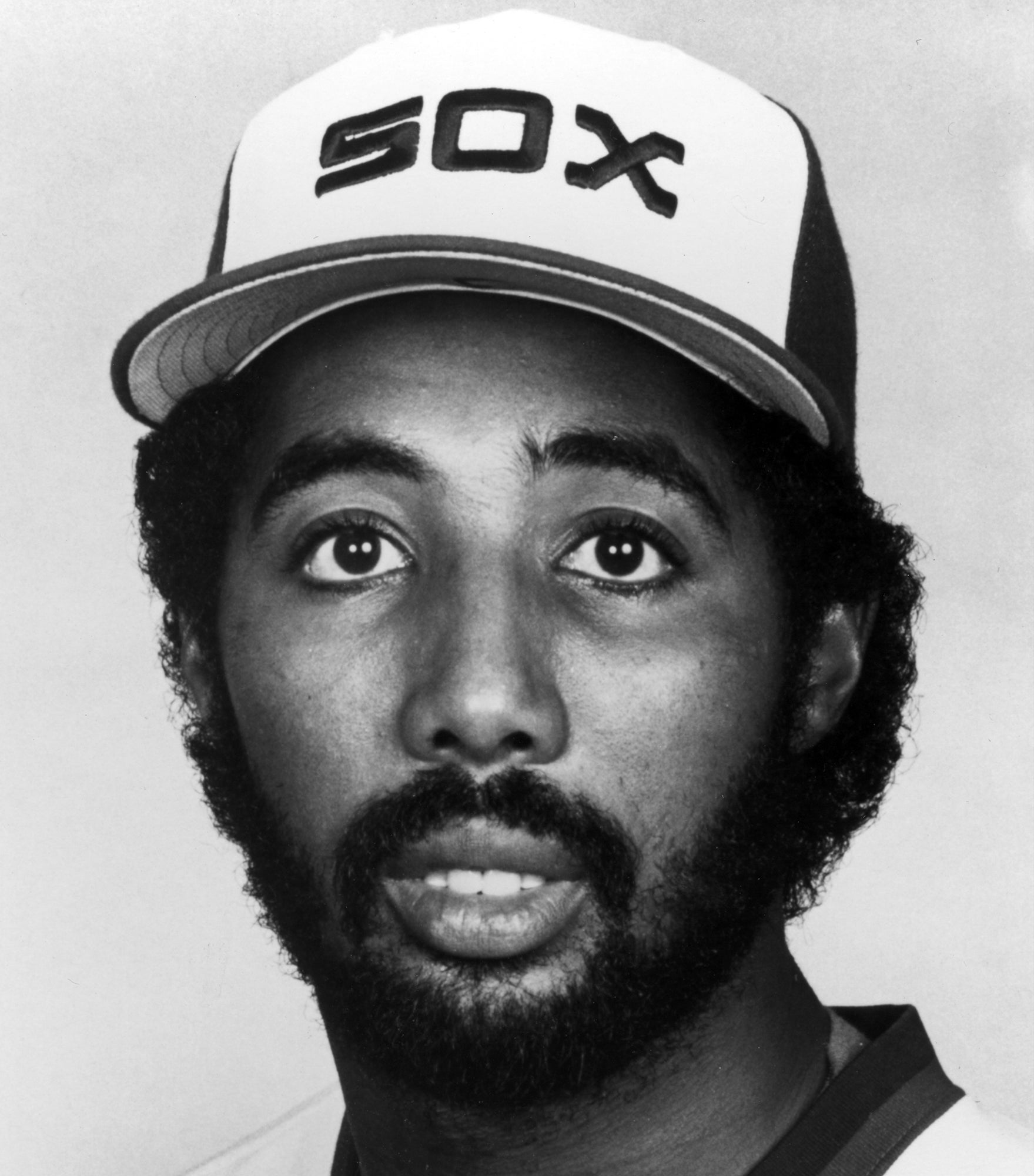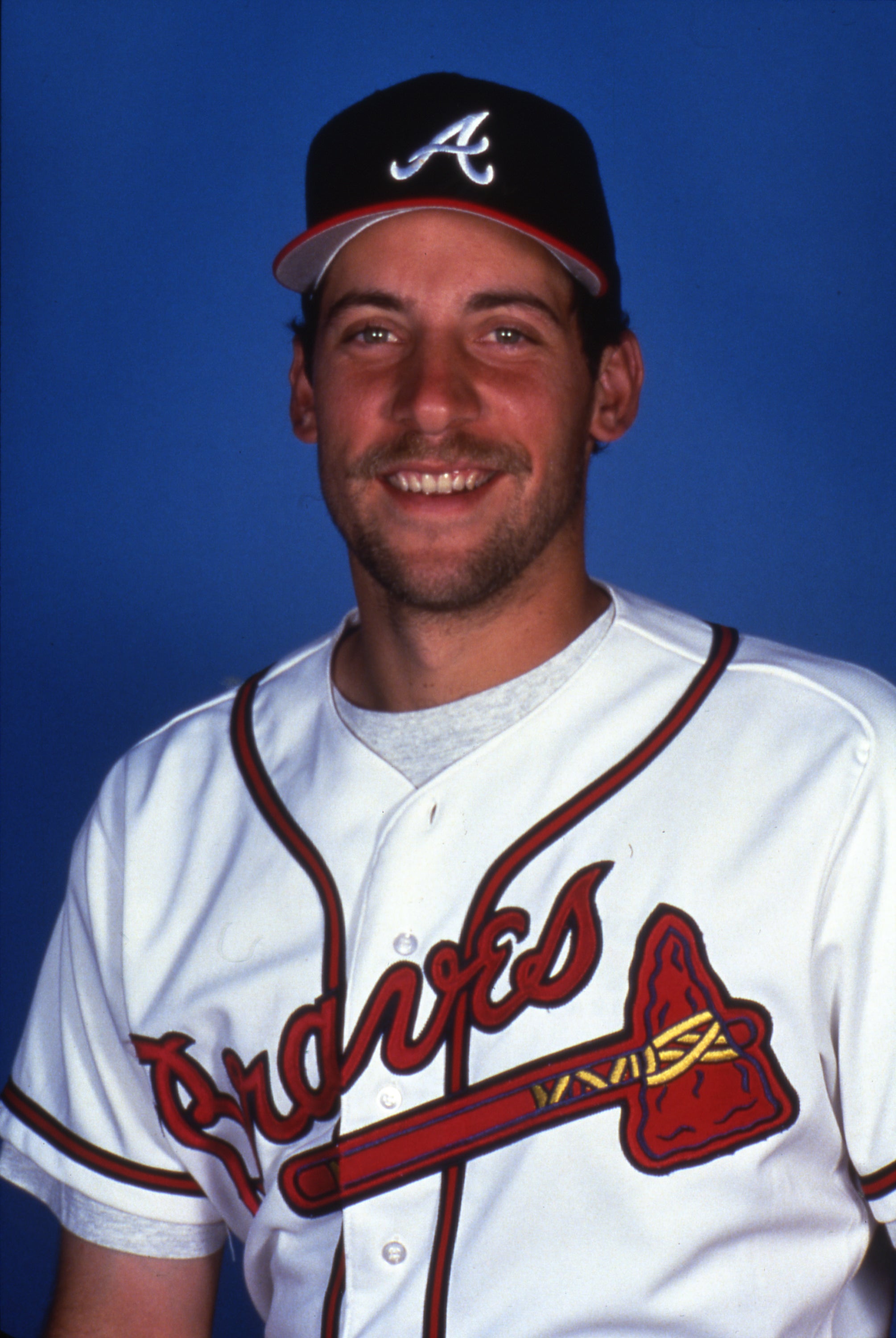- Home
- Our Stories
- #CardCorner: 1990 Topps John Cangelosi
#CardCorner: 1990 Topps John Cangelosi
On Sept. 15, 1988, Randy Johnson took the mound at Montreal’s Olympic Stadium to begin what would be a Hall of Fame career.
At 6-foot-10, Johnson stared in toward catcher Mike Fitzgerald to get the first sign of the game. In the batter’s box was John Cangelosi, who at 5-foot-8 (maybe) was one of the smallest players in the big leagues.
But Cangelosi’s huge heart helped him play in the majors for parts of 13 seasons, earning a World Series ring along the way.
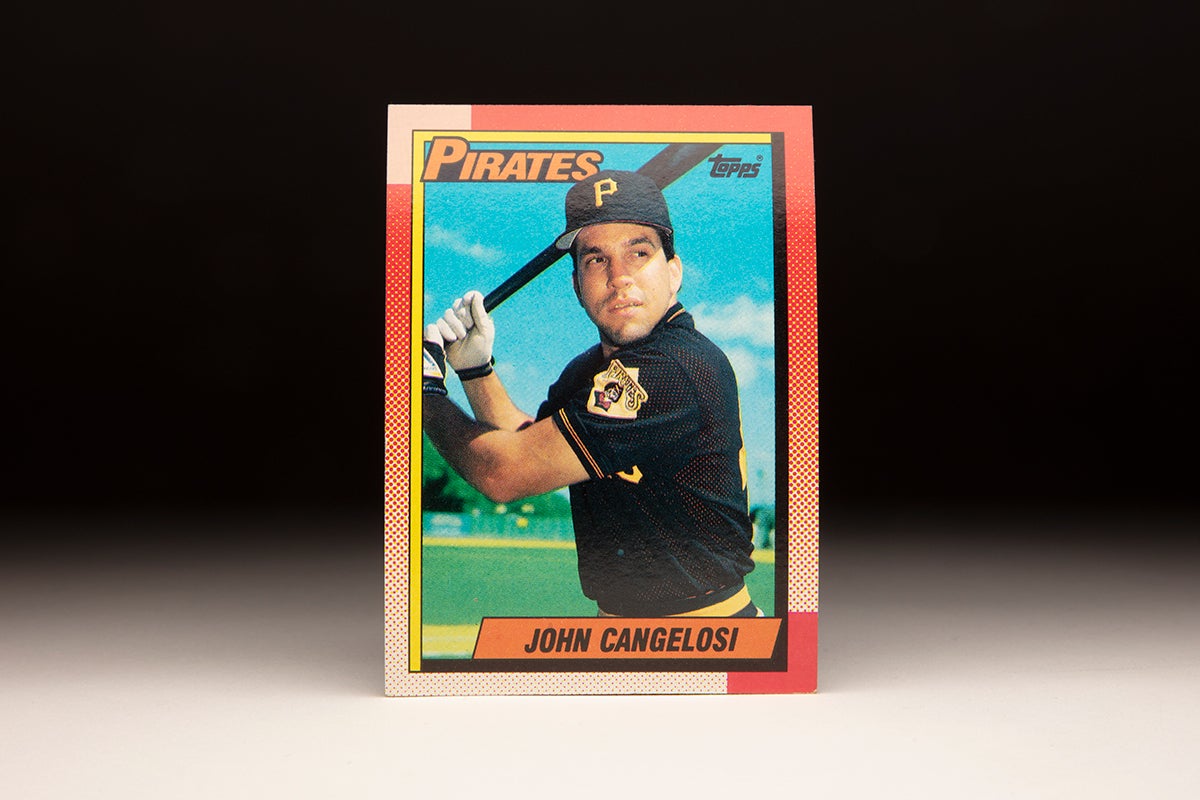
Born March 10, 1963, in Brooklyn, N.Y., John Anthony Cangelosi moved with his family to South Florida before he started school. He was an all-around athlete who played football, soccer and baseball, with the National Pastime being his best sport.
A three-time all-state selection for Miami Springs High School in Hialeah on the diamond, Cangelosi batted right-handed throughout his youth league and high school days but was a left-handed thrower – making it almost impossible for him to play second base or shortstop, where his size would be less of an issue.
“I’m a freak,” Cangelosi told the Chicago Tribune in 1985 when he was a rookie with the White Sox. “I wish I was right-handed. I would have a better chance to make money – you know, like at second base or shortstop.”
Undrafted out of high school, Cangelosi enrolled at Miami Dade-North Community College and learned how to switch-hit.
“My coach in high school suggested I switch-hit but I was too naïve to switch over,” Cangelosi told the Tribune. “But when I went to college, (White Sox scout) Walt Widmayer took me aside and told me that my only chance to play pro ball was to learn to switch-hit. He’d draft me, he said, if I switch-hit. If I didn’t, he wouldn’t draft me.
“I always wanted to get my foot in the door. I always wanted to play pro ball.”
Widmayer, who was instrumental in scouting Harold Baines, Richard Dotson and Jerry Hairston – among others – for the White Sox, was true to his word. Chicago drafted Cangelosi in the fourth round of the January 1982 Draft for college players after Cangelosi proved he could handle switch-hitting – though he never hit as high as .300 in college.
“Inside pitches were a little hard,” Cangelosi told the Tribune. “But my family and I talked about it and figured maybe I just was a natural lefty who had been swinging right-handed.”
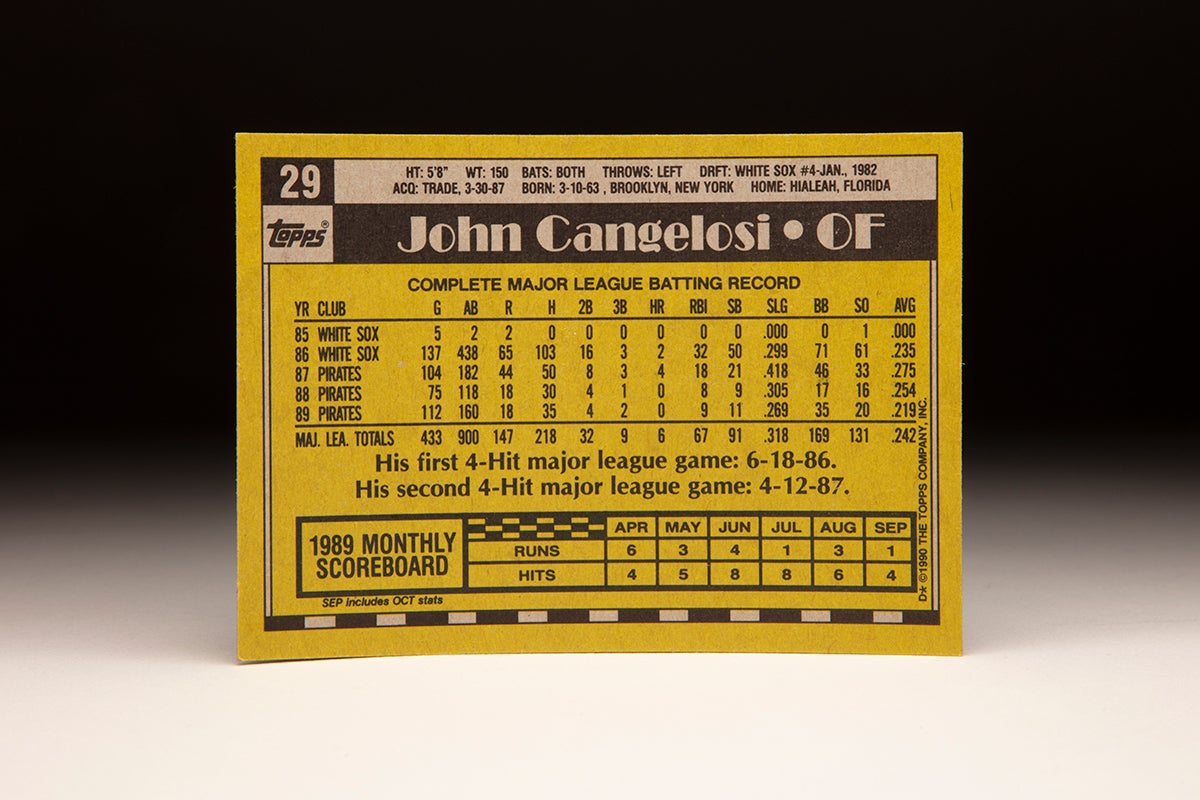
The White Sox sent Cangelosi to Niagara Falls of the New York-Penn League in 1982, and he hit .289 with 56 walks, 45 steals and 60 runs scored in 76 games. With Appleton of the Class A Midwest League in 1983, Cangelosi stole 87 bases in 128 games while batting .282 with 99 walks – earning a spot on the league’s all-star team.
He moved up to Double-A Glens Falls in 1984 and continued to post remarkably consistent numbers, batting .287 with 65 steals and 101 walks in 138 games. After impressing the White Sox brass in the Puerto Rican Winter League following the season, Cangelosi was assigned to Triple-A Buffalo in 1985. But he was also part of a player exchange that saw him play for the Mexico City Reds, where he hit .353.
In late June of 1985, the White Sox brought Cangelosi to Chicago.
“Cangelosi is a feisty little guy,” White Sox general manager Roland Hemond told the Tribune. “He’ll run down balls in the outfield. He’ll pinch-run and steal bases for us.”
Cangelosi appeared in only five games before being sent back to Triple-A Buffalo. But in the spring of 1986, Cangelosi shocked everyone by winning the job as the White Sox’s center fielder while beating out highly touted prospect Daryl Boston.
Cangelosi hit .345 and was a perfect 18-for-18 on stolen base attempts during exhibition play.
“I proved I’m not a fluke,” Cangelosi, who was not a member of the team’s 40-man roster at the start of Spring Training, told Copley News Service. “The odds were against me. They weren’t looking at me for this year. But going in, I thought I had nothing to lose, just something to gain.”
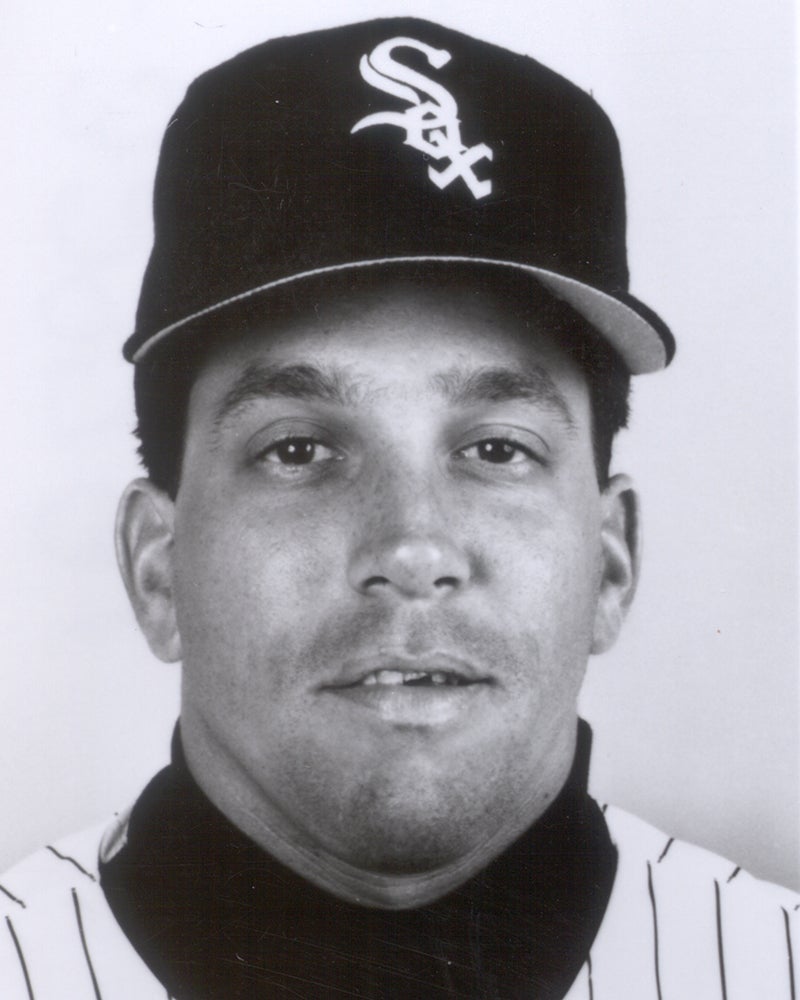
Cangelosi quickly became a clubhouse favorite. And his analysis of his own ability to reach base was way ahead of its time.
“I’m shooting for 70-or-more (stolen bases),” Cangelosi said. “Not to sound cocky, but if my on-base percentage is high, I’ll be running.”
Cangelosi held the starting center field job for four months before the White Sox returned Boston to center and put Cangelosi in left field. Though he didn’t reach base or steal bases like he did in the minors, Cangelosi hit .235 with 71 walks and 50 steals, compiling a .349 on-base percentage and scoring 65 runs. The 50 steals tied the Live Ball Era (post 1919) American League record for rookies.
“I’m not small – I’m just small for my sport,” Cangelosi told the Tribune. “My size might hurt me if I was a home run hitter or a first baseman, but I’m qualified to do the things I do: the stolen base, play the outfield, get on base, make things happen.”
But with Boston now set in center field, the White Sox traded Cangelosi to the Pirates on March 27, 1987, in exchange for pitcher Jim Winn.
For Cangelosi, it marked a reunion with Pirates manager Jim Leyland, who got to know Cangelosi while both were with the White Sox organization.
“It will be good for me,” Cangelosi, who appeared ticketed for Triple-A before the trade, told the Tribune. “At least I’ll still be in the big leagues.”
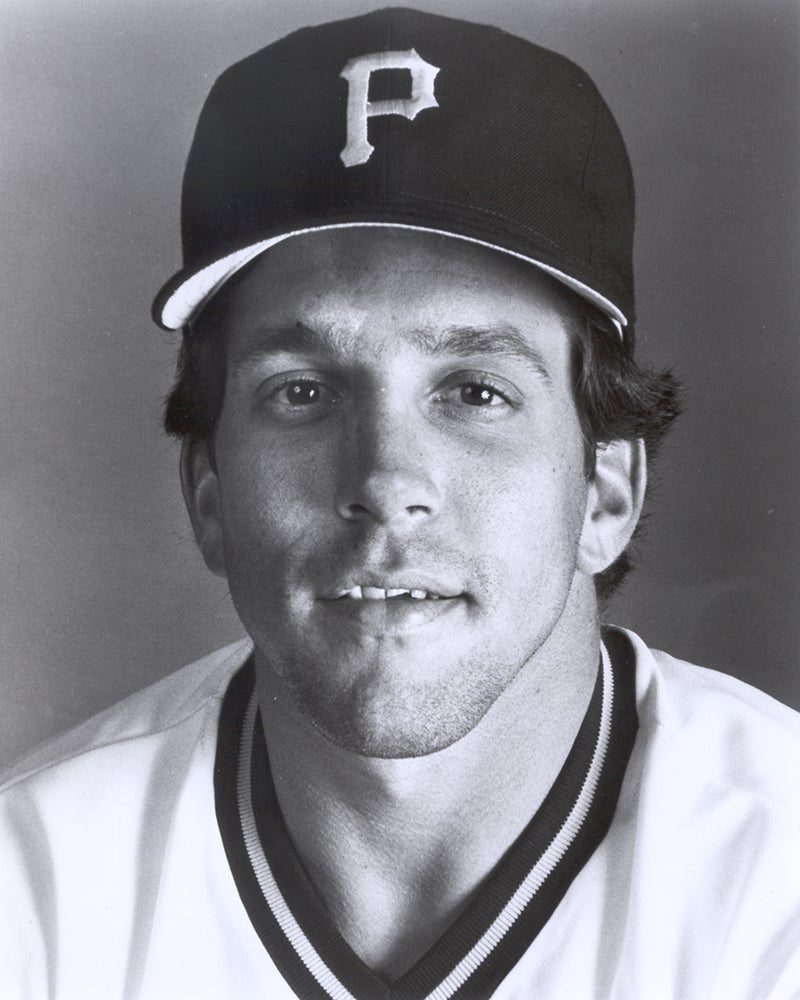
Cangelosi quickly became one of Leyland’s favorite pinch-hitters and even got a few starts in center field over Barry Bonds before the Pirates moved Bonds to left field and installed Andy Van Slyke in center in late May. On Sept. 15, 1987, Cangelosi became the first Pirates player to steal home since Manny Mota on May 17, 1966.
“It’s hard not to play (Cangelosi),” Leyland told the Pittsburgh Post-Gazette. “He’s doing exactly what we got him for. He stirs things up.”
In 104 games in 1987, Cangelosi hit .275 with 46 walks and 21 stolen bases. He hit .254 in 75 games in 1988 despite missing time with a right thumb injury.
Cangelosi was healthy in 1989 and appeared in 112 games as the Pirates battled injuries throughout the rest of their roster. He hit just .219 but had a .365 OBP and earned praise from Leyland once again.
“I don’t know how many times in the last three years he’s come off the bench and sparked us,” Leyland told the Post-Gazette. “John Cangelosi, when our team is in sync and healthy, is one of the most valuable players on our ballclub. And the thing is, when our club is going well, he doesn’t get much credit. And when our club is going bad, he gets no credit.”
The Pirates scuffled in 1989, going 74-88 a year after they won 85 games and finished second in the NL East. But in 1990, Pittsburgh’s young core of Bonds, Van Slyke and Bobby Bonilla put it all together and led the team to the division title.
Cangelosi, however, had his most challenging MLB campaign to date, batting just .197 with one RBI and seven steals over 58 games – most of which came as a pinch-hitter. He was sent to Triple-A for a month during the summer – a move that reduced Leyland to tears in sympathy for one of his favorite players.
In the NLCS vs. the Reds, Leyland chose to go with an 11-man pitching staff, which left Cangelosi as the odd man out and off the postseason roster. The Pirates lost to Cincinnati in six games.
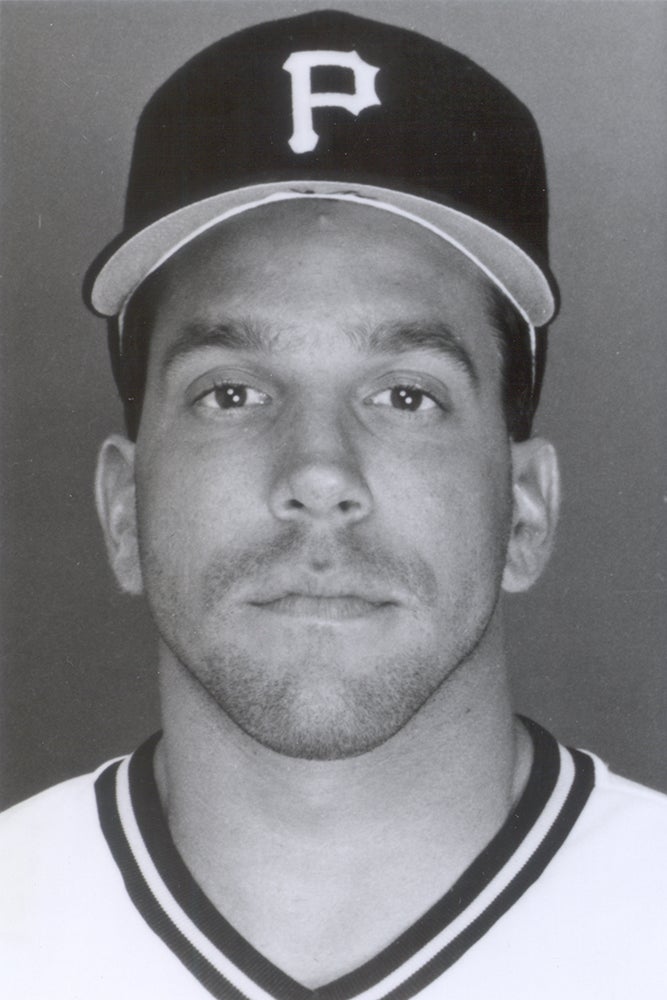
Cangelosi became a free agent following the season, and he reported to Spring Training in 1991 with the White Sox on a minor league deal. But despite a strong performance in the exhibition season, he did not make the big league roster and was sent to Triple-A Vancouver. On May 23, he was traded to the Brewers in exchange for infielder Esteban Beltré but remained in Triple-A all season, batting a combined .281 with 70 walks and 35 steals in 113 games.
He signed with the Rangers for the 1992 season and made the team’s Opening Day roster before being released on July 19 with a .188 batting average (albeit with a .330 on-base percentage). He spent the rest of the season with Detroit’s Triple-A team in Toledo and returned to the Mud Hens for all of 1993, batting .292 with 39 steals in 113 games.
Having spent two of the last three seasons in Triple-A, Cangelosi seemed to be at a career crossroads. But he refused to stop pursuing his big league dreams.
In 1994, Cangelosi made the Mets’ Opening Day roster as a bench player and captured national headlines in May when he charged the mound during a brawl after being hit by a pitch from the Braves’ John Smoltz. The incident followed a grand slam off the bat of Ryan Thompson.
“If it happened again, I’d do it again,” Cangelosi told the Associated Press while a bruise formed under his right eye after the game.
But despite a torrid start where he hit .455 through April 22 and earned several starting assignments on the strength of that burst, Cangelosi was designated for assignment on July 8. At the time, he was leading the Mets in stolen bases (five) and pinch-hits (five) while batting .252 in 62 games.
“I thought I did everything they asked of me,” Cangelosi told Newsday. “I think I helped. But they said they didn’t need me.”
Cangelosi did not play in the big leagues again that season but found work with the Astros in 1995. He hit .318 – his first full season as a .300 hitter at any pro level – with 48 walks (good for a .457 OBP) and 21 steals in 90 games.
He put up similar numbers in 1996 in 108 games with Houston, batting .263 with 44 walks and 17 steals. His batting average was dragged down by a 1-for-28 showing as a pinch-hitter, but that did not discourage teams from pursuing Cangelosi when he became a free agent following the season.
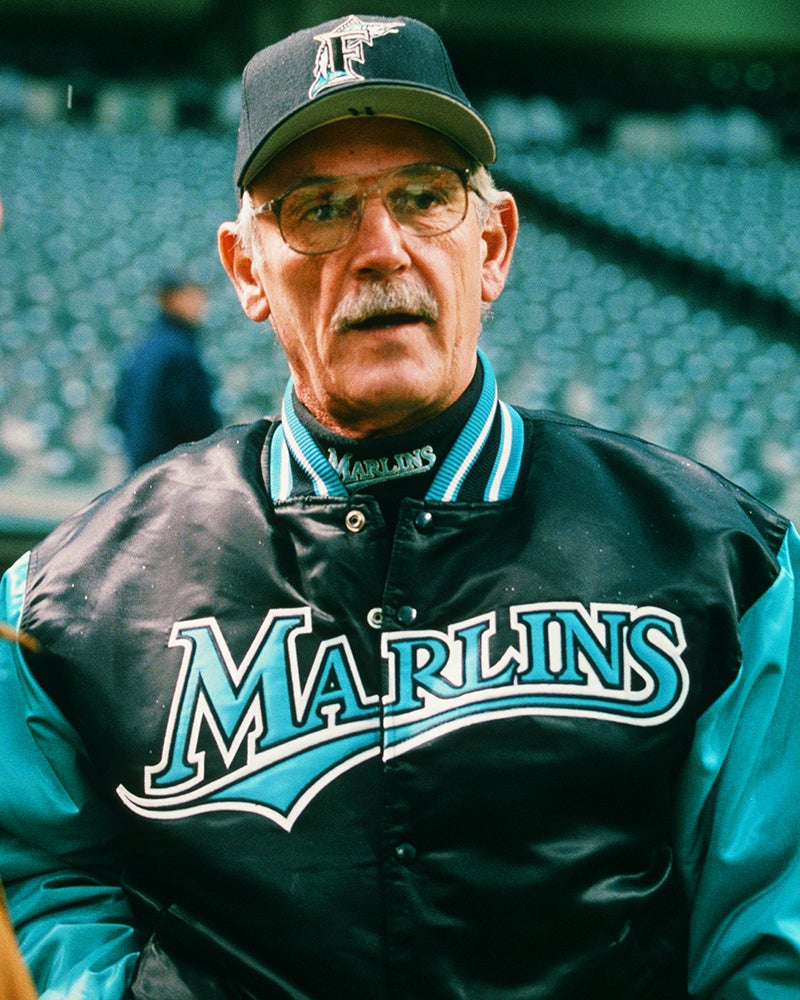
On Nov. 26, Cangelosi found some security when he signed a two-year deal worth $1.75 million with his hometown Marlins.
“I said: ‘I want to go there,’” Cangelosi told the South Florida Sun Sentinel about when he learned of the Marlins’ interest. “I’m a piece to the puzzle. I’m willing to accept that role.”
The Marlins were in the process of building an all-star roster via trades and free agency – spending $89 million on free agents – and had brought in Leyland, who left the Pirates after the 1996 season, to manage the club.
The Marlins steamrolled through the exhibition season and began the regular season 8-1. The team continued to win as the weather got warmer, and Cangelosi had his best day of the year on June 25 when he went 4-for-5 with three RBI as Florida defeated the Phillies 7-5 to move 15 games over .500 for the first time in the club’s five-year history.
But the next day, team owner H. Wayne Huizenga announced that he was putting the team up for sale. It would be the start of what would be a roller coaster of highs and lows in South Florida.
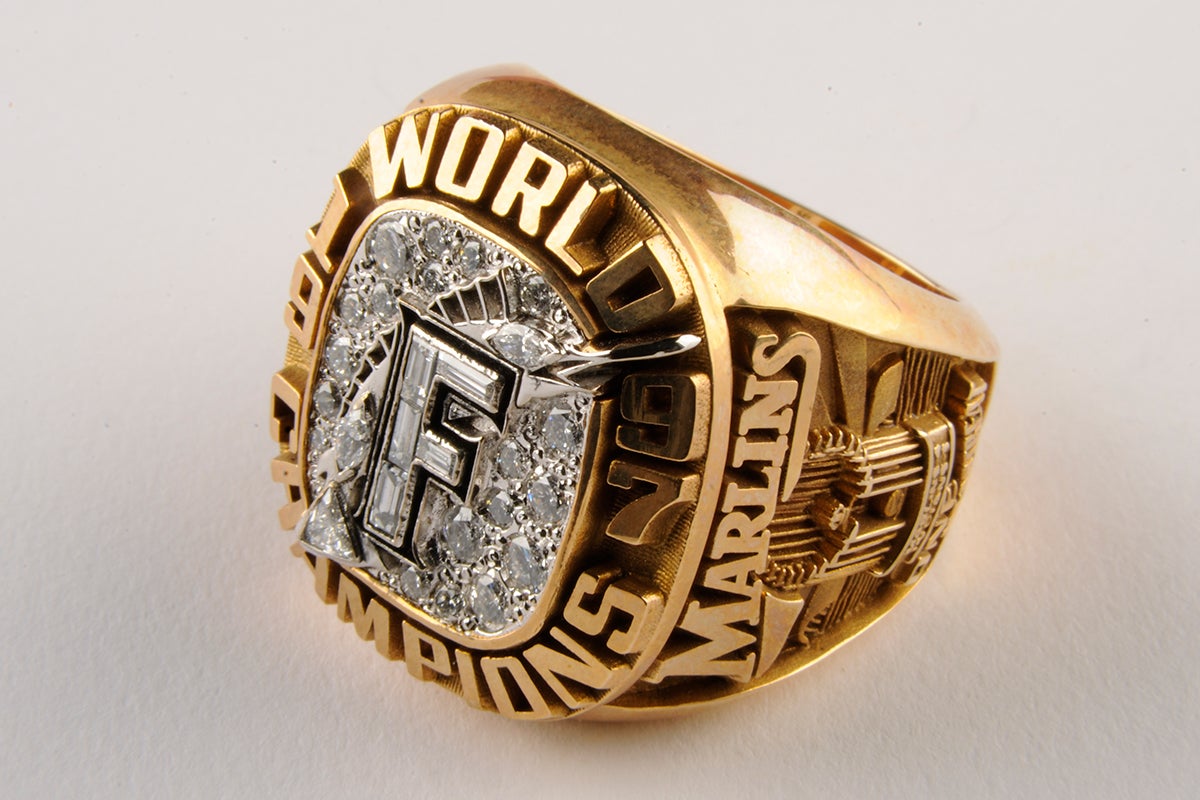
In 103 games that season, Cangelosi hit .245 with 19 walks and 28 runs scored. The Marlins finished second in the NL East with 92 wins but clinched the Wild Card berth. Florida swept the Division Series vs. the Giants, with Cangelosi getting his first postseason appearance when he grounded out while pinch-hitting for Liván Hernández in Game 2. He pinch-hit again in Game 2 of the NLCS vs. the Braves, then started Game 3 in left field – going 0-for-3 with a walk as the Marlins’ leadoff hitter in a 5-2 win. The Braves starting pitcher that day was Smoltz, against whom Cangelosi was hitting .526 (10-for-19) at that point in his career.
Cangelosi finished his playing days with a .500 batting average against the future Hall of Famer (10-for-20 with five walks). Only Bruce Ruffin faced Cangelosi more times than Smoltz (38 plate appearances to 30), and Cangelosi had more hits against Smoltz than any other pitcher.
Cangelosi got his first postseason hit as a pinch-hitter in Game 4, and the Marlins went on to win the series in six games. In the World Series against Cleveland, Cangelosi would come to the plate three times as a pinch-hitter, recording a single in Game 6.
In Game 7, Cangelosi had a chance to be the hero when he pinch-hit for Robb Nen in the 10th inning with runners on first and second and one out. But José Mesa got Cangelosi to strike out looking, and the Marlins failed to score.
But in the bottom of the 11th, Édgar Rentería’s single scored Craig Counsell to give the Marlins a 3-2 win – and give Cangelosi a World Series ring. The good feelings, however, would not last.
The Marlins began tearing down the team soon after the World Series in cost-cutting moves, and Cangelosi’s $550,000 salary seemed to be more than the team was willing to pay. But they found no takers via trades and Cangelosi remained on the team despite virtually cleaning out his locker late in Spring Training in anticipation of being traded.
Leyland, for one, was glad Cangelosi stayed.
“Cangy,” Leyland told the Miami Herald, “would be a good guy to have around.”
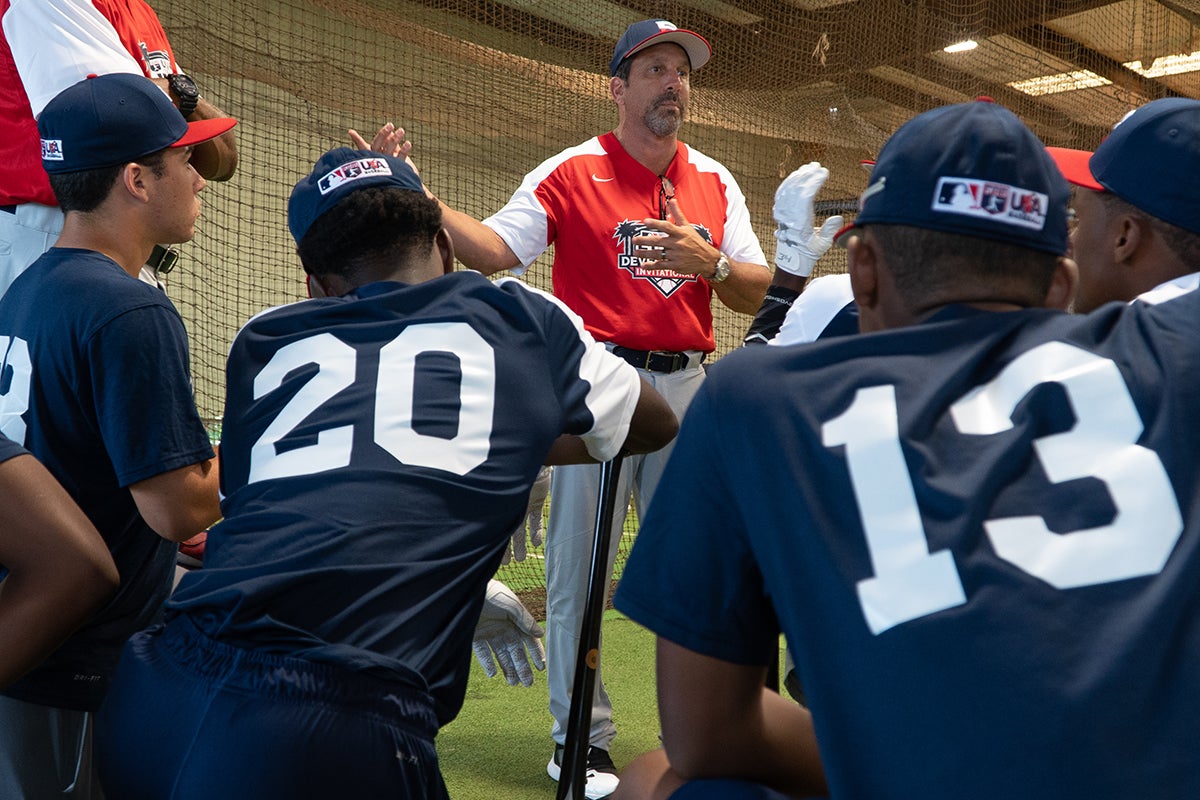
The Marlins lost 108 games in 1998, and neither Leyland nor Cangelosi were around for the 1999 season. Leyland moved on to the Rockies, and Cangelosi followed him to Colorado after going to Spring Training with the White Sox but being released on March 30.
Cangelosi joined the Rockies on Sept. 1 after a stint with Triple-A Colorado Springs where he hit .330 in 29 games. But he appeared in just seven games with the Rockies, notching one hit in six at-bats at a pinch-hitter.
Colorado lost 90 games, Leyland left the team and Cangelosi never played in the big leagues again.
Over his 13 seasons in the big leagues, Cangelosi hit .250 with a .370 OBP and 154 stolen bases. Four-hundred sixty-nine of his 1,038 games featured a pinch-hitting appearance, and Cangelosi also pitched in three games – in an era where position-player appearances on the mound were uncommon – while allowing no earned runs and one hit over four innings.
He was willing to do whatever it took to remain in the majors, and John Cangelosi proved that where there was a will, he’d find a way.
“I’ve always been an underdog,” Cangelosi told the Chicago Tribune during his rookie season. “People always said: ‘Who’s that little guy? He can’t play.’
“But I always strived hard. I’d make ’em turn around and look again.”
Craig Muder is the director of communications for the National Baseball Hall of Fame and Museum
